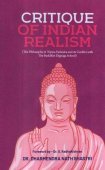Inherence: 1 definition
Introduction:
Inherence means something in Hinduism, Sanskrit. If you want to know the exact meaning, history, etymology or English translation of this term then check out the descriptions on this page. Add your comment or reference to a book if you want to contribute to this summary article.
In Hinduism
Ayurveda (science of life)
Source: INSA Digital Repository: Caraka’s Approach to KnowledgeInherence (Sanskrit: samavāya) refers to one of the various Padarthas (categories of all that exists) which were adapted by Caraka in his Charakasamhita.—Vaisheshika was an ancient system dating back to the time of the Buddha and drew within its fold ‘physics, metaphysics, and logical discussions skillfully dovetailed’ (Cf. Charaka Samhita verse 11.44-56).—[...] The primary classification of Padarthas into substance, quality, activity, generality, particularity and inherence (samavāya) was adopted by Charaka without changes. But other adoptions from Vaisheshika were qualified.

Āyurveda (आयुर्वेद, ayurveda) is a branch of Indian science dealing with medicine, herbalism, taxology, anatomy, surgery, alchemy and related topics. Traditional practice of Āyurveda in ancient India dates back to at least the first millenium BC. Literature is commonly written in Sanskrit using various poetic metres.
See also (Relevant definitions)
Full-text (+50): Samavaya, Padartha, Avigama, Vyapti, Vyapakata, Vyastata, Avyapyavritti, Nishtha, Samyuktasamavaya, Samyuktasamavetasamavaya, Adhishthiti, Sannikarsha, Vaiyadhikarana, Sadhanavyapakatva, Sadhanavyapakata, Nirudha, Sadhyavyapakata, Samanadhikaranya, Vyaptijnana, Vyapyavritti.
Relevant text
Search found 53 books and stories containing Inherence; (plurals include: Inherences). You can also click to the full overview containing English textual excerpts. Below are direct links for the most relevant articles:
Padarthadharmasamgraha and Nyayakandali (by Ganganatha Jha)
Text 159 < [Chapter 9 - On Samavāya (Inherence)]
Text 12 < [Chapter 3 - Similarities and Dissimilarities among Categories]
Text 19 < [Chapter 3 - Similarities and Dissimilarities among Categories]
The Tattvasangraha [with commentary] (by Ganganatha Jha)
Verse 32 < [Chapter 1 - Examination of the Doctrine of Primordial Matter (prakṛti)]
Verse 860-864 < [Chapter 15 - Examination of Samavāya (‘subsistence’)]
Verse 854 < [Chapter 15 - Examination of Samavāya (‘subsistence’)]
A comparative study between Buddhism and Nyaya (by Roberta Pamio)
2.2. Perception according to Vātsyāyana < [Chapter 4 - The Nyāya Theory of Perception]
5.1. Perception of the Universals < [Chapter 4 - The Nyāya Theory of Perception]
5.2. Perception of Abhāva < [Chapter 4 - The Nyāya Theory of Perception]
Vakyapadiya of Bhartrihari (by K. A. Subramania Iyer)
Verse 3.3.8-11 < [Book 3 - Pada-kāṇḍa (3): Sambandha-samuddeśa (On Relation)]
Verse 3.3.13 < [Book 3 - Pada-kāṇḍa (3): Sambandha-samuddeśa (On Relation)]
Verse 3.3.19 < [Book 3 - Pada-kāṇḍa (3): Sambandha-samuddeśa (On Relation)]
Brahma Sutras (Nimbarka commentary) (by Roma Bose)
Brahma-Sūtra 2.2.13 < [Adhikaraṇa 2 - Sūtras 11-17]
Brahma-Sūtra 2.1.16 < [Adhikaraṇa 6 - Sūtras 14-19]
Philosophy of Charaka-samhita (by Asokan. G)
Inherence (samavāya) [in Charaka philosophy] < [Chapter 2 - Fundamental Categories]
Attribute (guṇa) [in Charaka philosophy] < [Chapter 2 - Fundamental Categories]
Dialectical terms [in Charaka philosophy] < [Chapter 7 - Logic and Dialectical Speculations]
Related products
